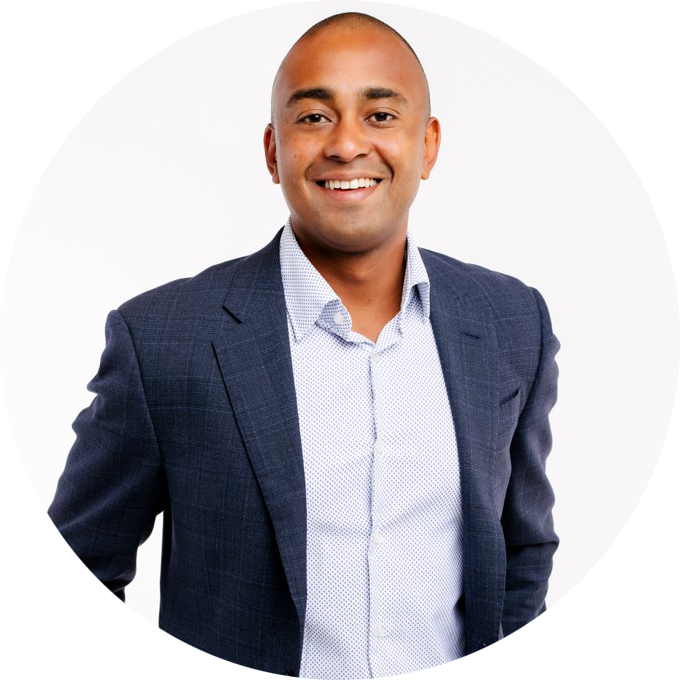
By Yusuf Qasim
Yusuf Qasim is President of Payments Optimization for Zelis, where he leads strategy and operations to further drive Zelis’ market leadership, capabilities and client services in payments and communications. Prior to this operating committee role, he served as Executive Vice President of Enterprise Development from June 2016, and as such, was deeply involved in the formation of Zelis and in the 2019 acquisition and foundational merger with RedCard.
Yusuf is a serial entrepreneur with experience in the technology, financial services, and healthcare industries. Yusuf launched his first business, DigitalEffex more than 20 years ago and has has worked with companies such as AOL, InComm Inc., MTV, Sony, MGM Grand and Foxwoods. He holds a Bachelor of Arts in Business Administration from Quinnipiac University.
Digital transformation in healthcare has been too slow and waiting any longer is a costly mistake for everyone.
Have you been on TikTok lately? Feel free to laugh if the answer is no but hear me out: in between the dances and the memes, one can find real insights on American life—and not excluding consumers’ views of their healthcare experiences. Overwhelmingly, gripes are ones we can guess; frustrations with costs, coverage, and the claims process—the usual symptoms of our outdated system. The unedited reactions on TikTok are a true wake-up call regarding the legacy of American healthcare and the need for rapid modernization.
One woman took to the ‘Tok aghast; she had received a disbursement check addressed to her cat—her cat named Gandalf (I’m not kidding)—for an overpayment of his prescription. It doesn’t take a wizard to figure out that she saw this as a laughable example of a not-uncommon payments experience. All jokes aside, we have a person in their 20s, receiving a paper check (and they have limited, if any, experience with paper checks), and no idea how to handle making a deposit for a “dependent.” While this example is consumer-focused, the convergence of an antiquated payment method, inaccurate consumer data and a confused healthcare participant shines a light on all the friction within healthcare payments. It makes you wonder about the frequency of these mistakes and of both the financial and resource costs to payers, providers, and ultimately the system at large.
It could be argued that the Gen Z consumer influence on our industry might be just a whisper, that they’re not involved with the day-to-day, back-end problems we have been working to solve. But… how far have we gotten?
We Haven’t Kept Up
Forty-three percent of payments executives remain inactive or reactive in converting providers to electronic transactions like ACH/EFT and electronic remittance advice, and only 7% of healthcare payers can be classified as “best in class” in terms of payment harmonization. Despite an increase in electronic adoption among providers, inflation and a rise in labor demand has forced a 15% increase in direct admin tasks among providers. The system is just overloaded.
For too long, organizations have been able to function relatively “normally” amidst a rapidly aging healthcare financial system. Evolution came in the form of plugging holes and adding point solutions to meet regulatory demands. As other industries digitized their businesses, we in the healthcare industry were left standing still, sifting through paper payments and patchworked systems, inaccurate or incomplete data and years-old, unprocessed claims. It’s no wonder consumers are losing faith in systems that once fairly served them: we haven’t kept up.
Regardless of whether we’re set to manage the unique demands of younger generations entering the marketplace, there are a number of here-and-now issues that push a consolidated, digital shift to a critical level of importance. Specifically, rising costs, ongoing inflation, new tax proposals and the most legislation we’ve seen in decades are colliding into a singular anthem of “time’s up.”
Signed, Sealed… Delivered?
It feels at odds with the theme of “modernization” to begin with the concept of postage, but the truth remains: A large part of payer communications and transactions are still done through the mail. Another recent increase in the price of postage (from $0.60 to $0.63) means every paper communication, check, EOB or letter sent via mail just increased in cost by 5% in postage alone, making it the 13th yearly postage rates increase since 2006. (Remember when stamps cost just $0.41?)
Coupled with the rising costs of ink and paper due to inflation and higher demand from slowed supply chains, as well as increasing sales taxes nationally, we have to ask ourselves: is it worth it to send Gandalf the Cat a paper check?
Coupled with the rising costs of ink and paper due to inflation and higher demand from slowed supply chains, as well as increasing sales taxes nationally, we have to ask ourselves: is it worth it to send Gandalf the Cat a paper check?
We have the stats: Data from the 2022 CAQH Index found that the industry can save $25B ($4B in claim payments and remittances alone) — a whopping 41% of existing annual $60B administrative spend — by transitioning to fully electronic transactions. We cannot continue to operate on the status quo lest we end up, in the words of Stevie Wonder, “like a fool [who] went and stayed too long,” spending billions for the sake of slowly waning progress.
Tackling Regulation
Let’s leave the bottom line to play in the background for a moment and consider the unignorable sound of industry regulation. Payers spent considerable time and resources analyzing significant new regulatory requirements in the past few years, including those relating to the Transparency Rules and the No Surprises Act.But governmental intervention has not and will not stop there.
The Centers for Medicare & Medicaid Services (CMS) published guidance last year related to ACH, virtual credit cards, and electronic payments in general. Thisguidance made clear that the government prioritizes electronic payments over the less secure and more costly paper checks, going so far as to say that plans were under no obligation to continue offering paper checks as a provider reimbursement option.
Between the CMS guidance and similar legislative activity at the state level, it’s clear that the government is placing great emphasis on provider choice in payments. This means payers will experience greater electronic adoption and the benefits that come from better meeting provider preferences, but organizations must be prepared to handle the transition to prioritize and service provider choice in payment modality.
A Singular Solution
Evolving to meet the clichéd digital transformation and preparing for a generation of digital natives whilst juggling federal and state mandates has its challenges. It’s daunting, yet to be direct: it’s dated. Adoption has been too slow. And even infrastructure built with the best intentions has resulted in fragmentation, leading to further compliance challenges, interoperability issues and security concerns.
The solution is simple. Payers must institute a consolidated platform that ties together not just an answer to administrative burden, but one that furnishes the flexibility of choice and true integration of the full payment file. Moving to a single source platform can solder any cracks that may have formed by years of a bifurcated payment process created through multiple systems, software, and stakeholders. And access to a full payment file allows businesses to stay nimble in the face of regulatory changes by centralizing all payment data—giving the options to manage business rules across platforms, gain insights and gather reports.
A single source provides the ability to innovate, ideate and plan.
At Zelis, we call it ZAPPSM (which stands for the Zelis Advanced Payments PlatformSM), a consolidated, end-to-end ecosystem for all healthcare payments and communications. ZAPP seeks to reduce risks and maximize the efficiency of your patchwork payments infrastructure. We can assess your current process and provide real-time analysis and a detailed report on the health of your system. Learn more about ZAPP here.
The aphorism “evolve or perish” is echoing from federal and economic corners, from our clients and from the next generation of consumers. We can no longer squeak by on the familiar processes of the past; the call for modernization is now.


